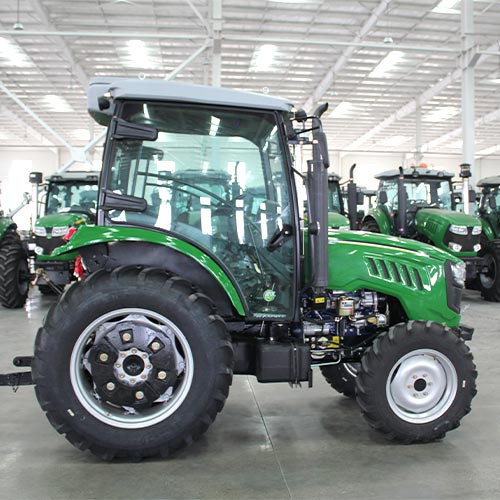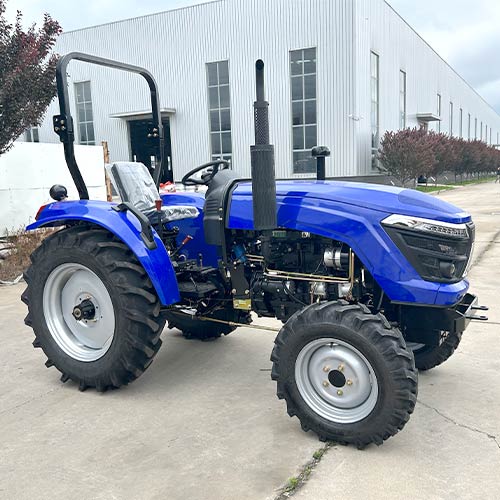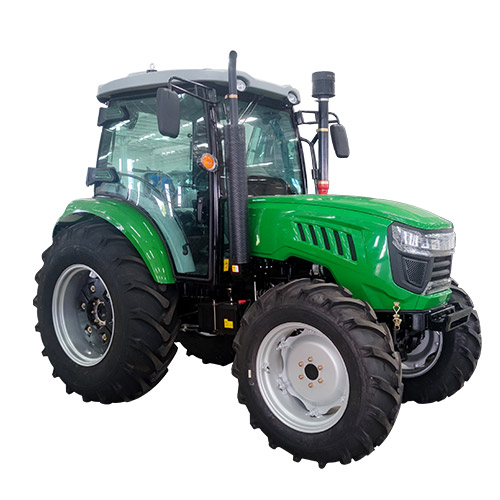Introduction
The farmland tractor has been an indispensable tool for agriculture since they were first introduced in the early 20th century. Powered by internal combustion engines, tractors replaced animal and manual labor as the primary means for plowing, planting, cultivating and harvesting crops on farms. Over the past century, tractor technology has advanced tremendously, enabling farmers to work larger plots of land with greater efficiency. Today’s modern tractors are highly sophisticated machines that integrate advanced electronics, hydraulics and precision farming systems. In this blog post, we will explore the history and evolution of the farmland tractor, common tractor models, key features and their importance in modern agriculture.
A Brief History of the Farmland Tractor

The first successful steam-powered tractor was invented in America in 1893 by John Froelich. However, steam tractors were heavy, inefficient and difficult to operate. The real breakthrough came in the early 1900s with the introduction of gasoline-powered tractors such as the Fordson, which was first produced in 1917. These early tractors were small and underpowered by today’s standards, often weighing less than 2 tons. However, they represented a massive improvement over horsepower and allowed individual farmers to cultivate much larger areas of land.
Throughout the 1920s and 30s, tractor technology advanced rapidly as companies like John Deere, International Harvester, Massey Ferguson and others competed to produce more powerful and efficient models. Tractors grew significantly in size and were equipped with features like multi-speed transmissions, hydraulics and pneumatic tires. By the late 1930s, tractors weighing over 5 tons with over 50 horsepower were not uncommon. These high-horsepower tractors could pull multi-section plows and other heavy tillage implements much faster than horse teams. They truly revolutionized agriculture and enabled expansion onto the prairies of North America and beyond.
Common Farmland Tractor Models
While there are hundreds of tractor models available today from various manufacturers, here are some of the most popular and widely-used tractors for general farmland work:
- John Deere 7R Series: Introduced in 2014, the 7R is John Deere’s top-selling four-wheel drive tractor for row-crop applications. Power ranges from 250-430 horsepower.
- Assemble Farm Tractor Series: is a large company dedicated to tractor distribution in China.It leads the production of various types of wheeled farm tractors with 25-260 horsepower, and its quality and service have been highly praised by customers.
- Case IH Magnum: A mainstay of Case IH’s tractor lineup, the Magnum is a multi-purpose tractor available in sizes from 150-450 horsepower. Known for reliability and durability.
- New Holland T8 Series: New Holland’s T8 tractors, available in sizes up to 390 horsepower, are optimized for heavy draft applications like tillage and hauling.
- Kubota MX Series: A compact but powerful option, Kubota MX tractors are well-suited for smaller farms and operations. Horsepower ranges from 75-155.
- Mahindra EMAX: An Indian manufacturer, Mahindra offers good value with tractors like the EMAX in the 75-155 horsepower range.
- Deutz-Fahr Agrotron: A European brand with tractors up to 400 horsepower. Known for advanced electronics and transmission options.
Key Features of Modern Farmland Tractors

While early tractors were rather basic machines, today’s models integrate many advanced technologies that have become essential for efficient farming operations. Here are some of the key features found on modern tractors:
Powerful Engines: Tractors are powered by large, turbocharged diesel engines producing upwards of 500 horsepower in some high-horsepower models. Fuel efficiency has also improved significantly.
Advanced Transmissions: Multi-speed powershift or continuously variable (CVT) transmissions precisely match engine power to load for optimal productivity and fuel savings.
Hydraulic Systems: Sophisticated hydraulics with remotes and electronic controls allow tractors to precisely operate a wide array of implements and attachments.
Electronics/Connectivity: Tractors have integrated displays, GPS-guided auto-steering, connectivity for fleet/field management and precision agriculture functions.
Safety/Comfort Features: Features like rollover protection, air conditioning, suspension seats and ergonomic controls make operating tractors more comfortable and safe.
Multi-Functionality: Modern tractors are modular platforms that can be configured for a variety of tasks with different attachments and implements.
Precision Farming Systems: Technologies like auto-section control, variable-rate application and yield monitors help farmers precisely manage inputs for maximum output.
Conclusion: Farmland Tractor
Over the past century, the farmland tractor has evolved from a basic machine that replaced animal labor into a highly advanced agricultural workhorse. Integrating the latest technologies, today’s tractors are precision farming tools that enable farmers to cultivate ever-larger areas of land more productively and sustainably. As agricultural demands continue to increase to feed a growing global population, further innovations in tractor power, efficiency and precision functionality will remain crucial. The farmland tractor sits at the core of modern agriculture and will continue to be a cornerstone of efficient food production for many decades to come.
FAQ
Q: What is the average horsepower of a modern farm tractor?
A: Most general-purpose tractors for row-crop and field work range from 150-300 horsepower. Very large tractors used for tillage or hauling can have over 500 horsepower.
Q: What are some common tractor attachments and implements?
A: Popular attachments include plows, discs, cultivators, seeders, balers, sprayers, spreaders, buckets/forks and more. The table below shows some common implements.
| Implement | Purpose |
|---|---|
| Plow | Primary tillage to invert soil |
| Disc | Secondary tillage to break up soil |
| Cultivator | Loosens and breaks up soil |
| Planter | Plants seeds at precise depths and spacing |
| Sprayer | Applies liquid fertilizers and pesticides |
| Harvester | Combines grains or picks other crops |
| Baler | Compresses and binds cut crops into bales |
Q: How many hours per year does a typical farm tractor operate?
A: It varies depending on the size of the farm and crops grown. On average, tractors are used between 300-600 hours annually during peak planting and harvesting seasons. Larger commercial farms may log 1,000 hours or more on their primary tractors.


